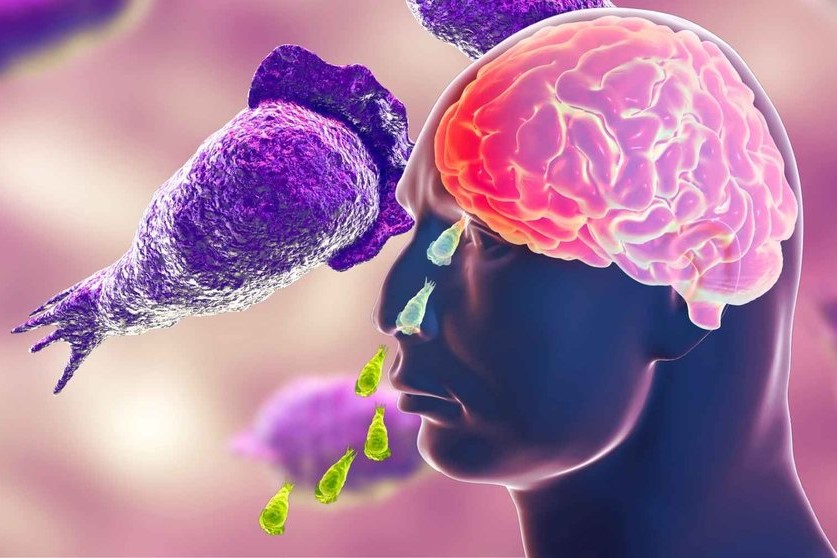
Naegleria infection: what it is and how to treat it
Naegleria infection (Naegleria fowleri) is contracted through prolonged exposure (several days) to water contaminated with the pathogen
Symptoms and diseases associated with Naegleria infection
Naegleria fowleri is the causative agent of primary amoebic meningoencephalitis (not to be confused with secondary meningoencephalitis caused by Entamoeba histolytica), an acute, fulminate and rapidly fatal infection affecting the central nervous system.
Diagnosis of the disease, usually late, contributes to its high mortality, such that only a few individuals survive the infection.
What is Naegleria infection?
Naegleria fowleri is an amoeba.
Although genetic analysis has identified around 30 species of Naegleria, N. fowleri is the only one that has been associated with human infection.
Its life cycle consists of three stages: a trophozoite, a temporary flagellated stage and a cyst.
The form found in the central nervous system and more generally in the tissues of the human body is the trophozoite; the flagellated state is only temporary, induced by particular environmental conditions, and returns to the trophozoite state within 24 hours.
The cyst, on the other hand, is the resistant form that allows Naegleria to withstand the absence of water and nutrients.
Naegleria: Cures and treatments
This amoeba is sensitive to the antifungal drug amphotericin B, which appears to have been used in almost all cases where the infection has been successfully eradicated.
Extensive analyses have shown that this active ingredient alters the membranes of the pathogen, including those of the nucleus and the smooth and rough endoplasmic reticulum.
However, given the increasing number of cases in which it has not been effective, experts are looking for new drugs, in the hope of finding some that are not only more effective, but also associated with fewer side effects.
Other potentially useful molecules include azithromycin, clotrimazole, itraconazole, fluconazole and ketoconazole. Miltefosine and chlorpromazine have also been tested.
If it is suspected that the infection may have led to increased intracranial pressure and that there is a risk of herniation, the intervention of a neurosurgeon may be necessary, who may opt for a ventriculostomy.
Disclaimer: The information given here is general advice and in no way replaces medical advice.
If you feel unwell, please contact your doctor or go to the emergency room.
Read Also:
Emergency Live Even More…Live: Download The New Free App Of Your Newspaper For IOS And Android
Intestinal Infections: How Is Dientamoeba Fragilis Infection Contracted?
Paediatrics / Recurrent Fever: Let’s Talk About Autoinflammatory Diseases
Bacteriuria: What It Is And What Diseases It Is Associated With


